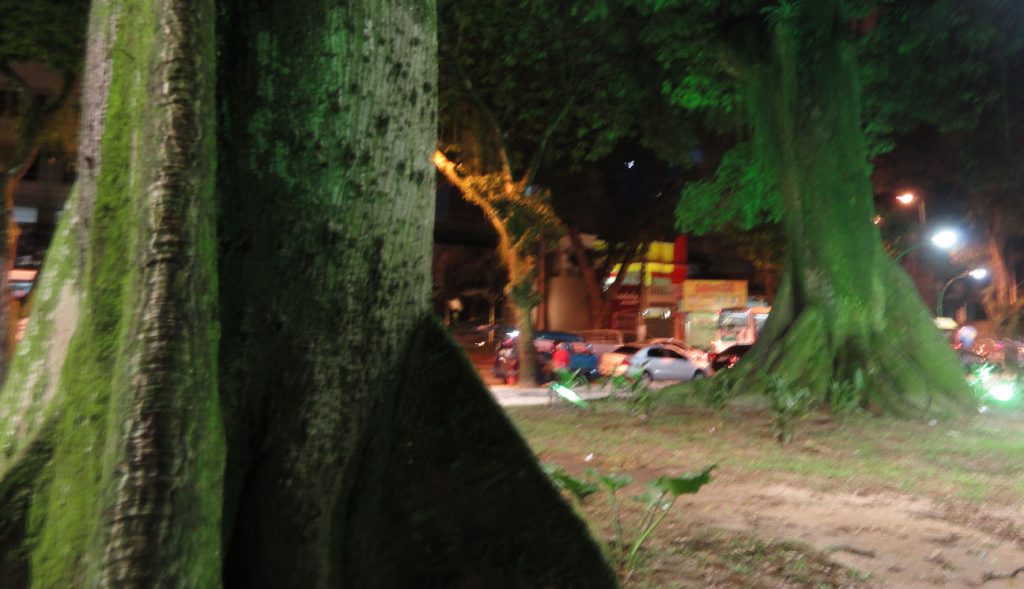
Flying into Belém you see a kind of water world. The Amazon splits into many rivers, with lots of islands. Streets are lined with very big mango trees, some planted a century ago. I was told that that drivers here have to buy special mango insurance, since the heavy fruit so often fall on cars, denting the hoods. But the trees are beautiful & worth the trouble. They make the city feel much more comfortable and lower the overall temperature.
Since we (Justen and I) got into town late, we didn’t have time to do too much. BTW, my picture is not good because of the late hour. It was dark. But those trees were really impressive and I wanted to get a picture for today’s post. We did find time to visit the offices of one of the major media firms, that owns newspapers, webpages and RBA (Rede Brasil Amazônia de Televisão) Rede Bandeirantes in Belém. We spoke to the boss, who is a good contact of some of my Embassy colleagues, but who I had never met. He was a very nice guy who spoke to us in English, explaining that he had family in Charlotte, NC and had lots of connections with the U.S.
He explained that Pará was getting more prosperous. The initial impetus was the vast mineral wealth. Vale (Compania Vale do Rio Doce) has mountains of iron, enough to supply the world for decades, and Alcoa has similar amounts of bauxite. There is also the wealth from forestry and agriculture. But Pará has now moved beyond simple resource based economics. At first this was because services had by necessity followed firms like Vale or Alcoa, but now the economics is self-sustaining.
A small but important help to Belém would be regular direct flights to Miami. Belém is closer to Florida than it is to some other parts of Brazil in terms of easy of access. This may soon happen, as firms add flights in response to growing demand.
We talked about educations, a subject always important in Brazil and making sure Pará was included in initiatives, since all the economic growth will require a more sophisticated labor force. Not everyone is as aware of the opportunities as might be desired, nor are people aware how easy it is to study in the U.S. We discussed doing webchats on the study in the U.S. and the Science w/o borders program. The beauty of the web format is that we can do it from Brasília or anywhere else and still tap into the network in Pará. This is something worth following and perhaps using in other places. The Amazônia site gets about two million visitors a month.
We had supper with five alumni YA and English immersion students. These are all smart kids. The older ones are completing their university studies. We talked in about the program and about things in general. One of the participants was planning to apply to Science w/o Borders and another said that he would after we explained it to him. He had been unaware of the opportunity.
I have never met a YA who was not wildly enthusiastic about the experience. Their challenge is staying in touch with colleagues, which they all want to do. This is something we should be more active in helping. These networks will prove extremely valuable to participants. As they move up in Brazilian society, and they certainly will, they can network with participants from all over Brazil. It is a great program and we need to make sure it keeps on paying dividends.
